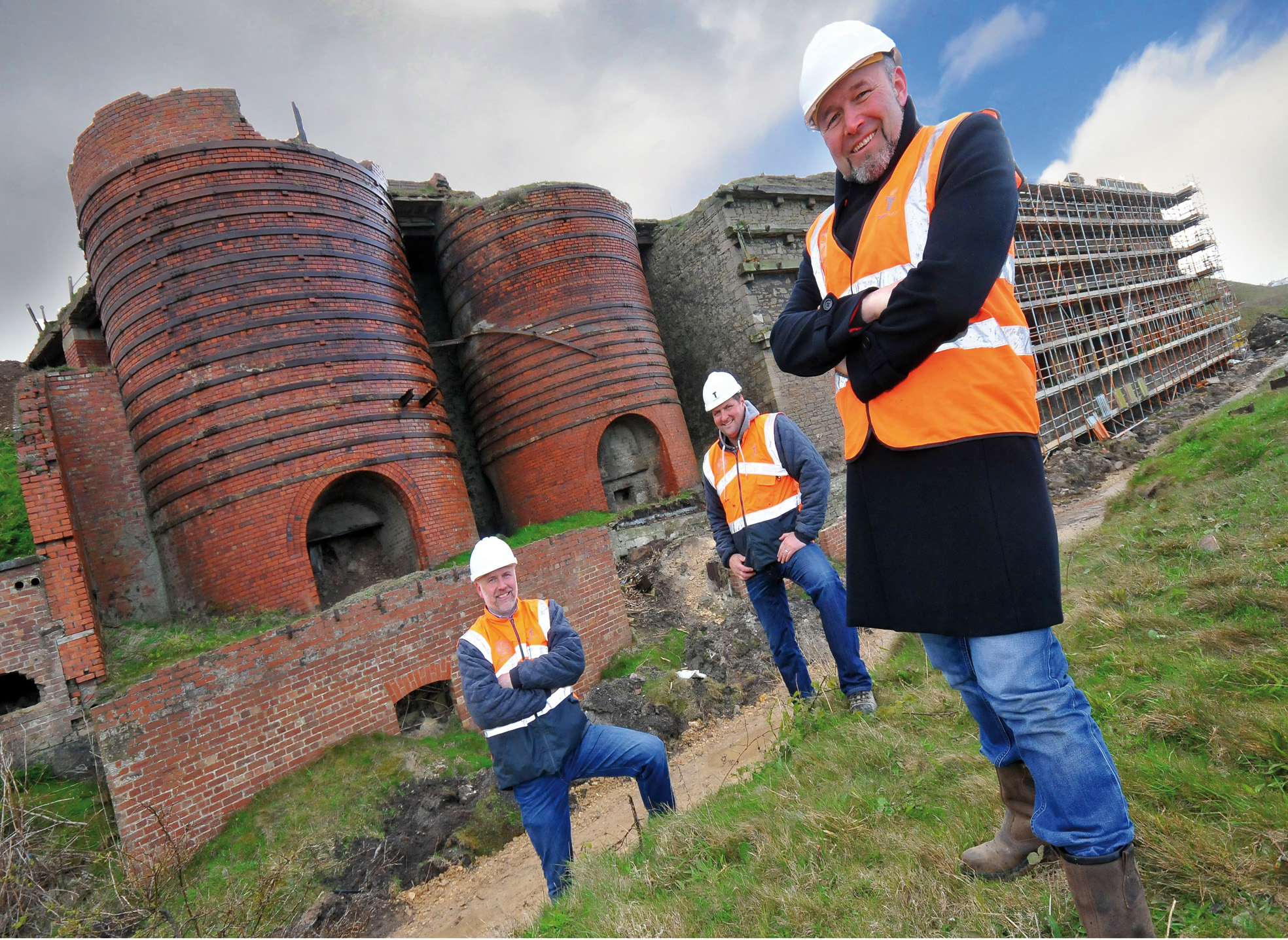By autumn this year the ‘at risk’ Marsden Lime Kilns should be endangered no more, thanks to the attention they are receiving from Team Force Restoration.
Team Force, based in Blyth, Northumberland, is a leading masonry conservation / restoration company in the North East. In the past 15 years it has helped save more than 150 of Britain’s most valued historical and ecclesiastical buildings, winning numerous awards along the way, including the 2015 RICS Award for Building Conservation and the National Award for Construction Excellence for The Black Barn in Northumberland. It spent four years restoring Seaton Delaval Hall in Northumberland and carried out award-winning conservation work on Lindisfarne Priory.
The Marsden Lime Kilns are a legacy of the North East’s industrial past. Built in the 1870s, they were once used to make quicklime for the agriculture, building, steel and chemical industries.
For their restoration, Team Force is using ‘hot lime’ mortar made with quicklime of the kind that would once have been produced in the kilns. It is a traditional way of using lime that offers a new approach to heritage work. (Want to know more about hot lime? Take a look at bit.ly/hot-lime).
New evidence from specialists in the field of conservation (including Team Force) who are reproducing these mortars show hot lime not only matches historic mortars but contributes to a dryer, better preserved structure.
Team Force Restoration MD Brendan Teasdale says: “In time, hot limes could prove to be essential for masonry conservation in the UK and as far as I’m concerned this is a must for the protection of our built heritage.”
Last year, Historic England and the Owen Pugh Group, which owns the kilns, jointly produced the funding for their £450,000 restoration. Described as a “scheduled moment of national importance”, they were on Historic England’s ‘Buildings at Risk’ list.
Team Force Restoration is repointing and consolidating the ragged tops of the kilns, conserving walls, protecting features and safeguarding the brick and stonework using historically authentic techniques.

